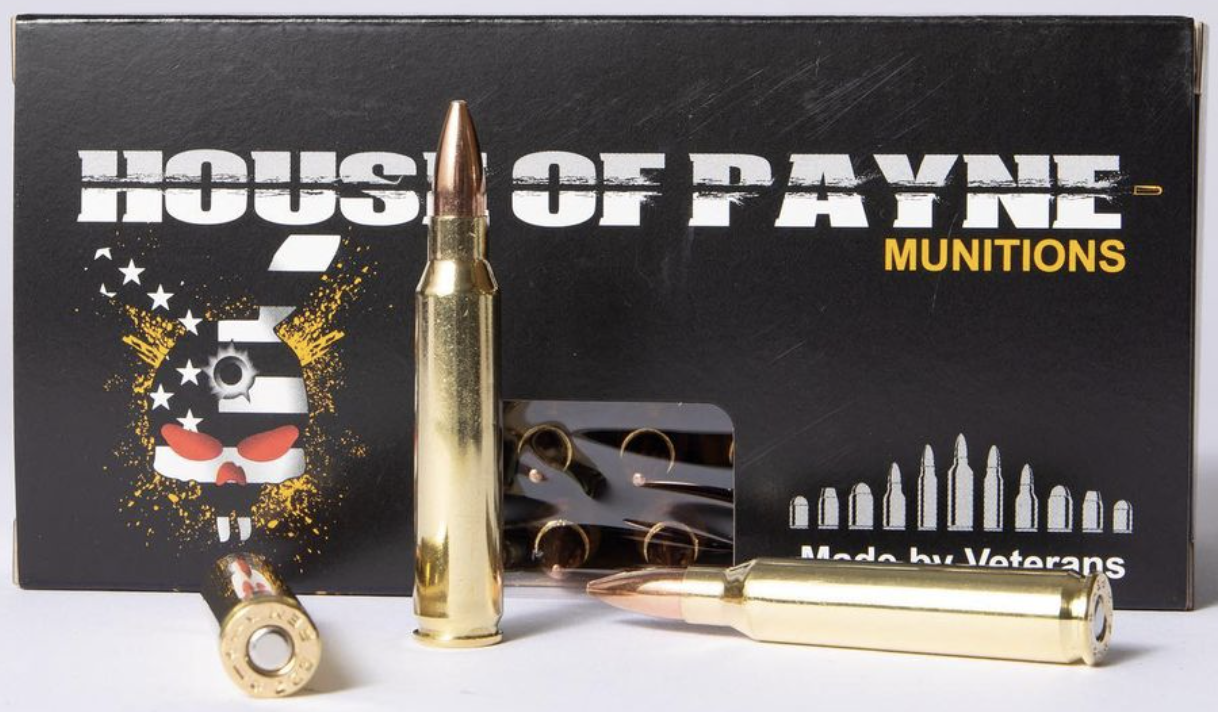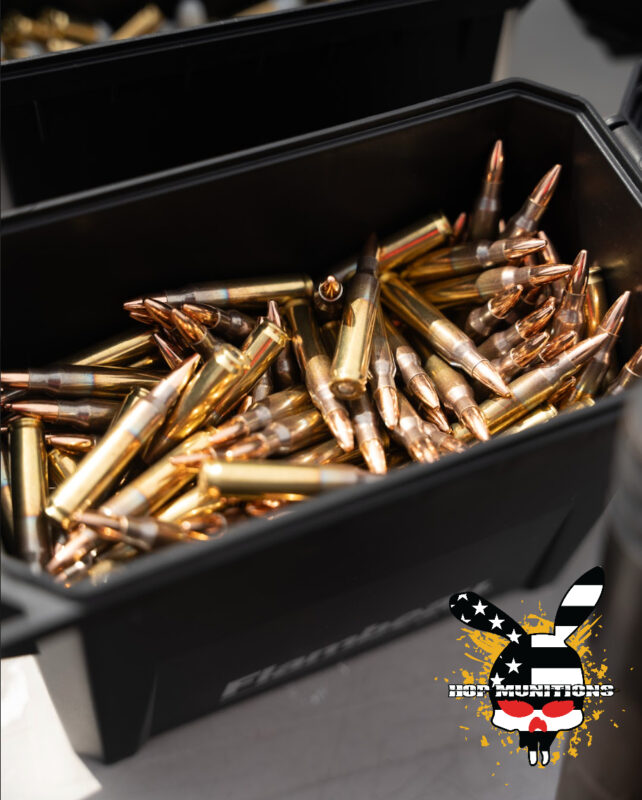HOP Blog
Is the M193 Round Good for Self-Defense?
If you’re looking to stock up on 55-grain FMJ that hits the right velocity for defensive use, HOP Munitions has you covered.
Our bulk .223 ammo clocks in at a blistering 3,200 feet per second with 1,250 foot-pounds of energy at the muzzle.
That’s more than enough speed to get the terminal effect M193 is known for.
What sets this round apart isn’t just the velocity, it’s the consistency. HOP loads to tight specs, which means you get repeatable results, and that’s critical when you’re depending on every shot to count.
What Actually Happens on Impact?
Let’s break this down without getting too clinical. M193 doesn’t expand like a hollow point. Instead, its lethality comes from the fact that it yaws, meaning it violently tumbles end over end, once it penetrates soft tissue.
That tumbling effect occurs because the bullet is moving so fast that it becomes unstable after encountering resistance. And that’s where the real damage occurs.
When the bullet yaws, it creates a temporary stretch cavity far larger than the actual .22-caliber diameter of the projectile. In many cases, the bullet can fragment at the cannelure (that little groove near the middle), sending secondary projectiles into surrounding tissue. That disruption can cause massive internal trauma, increasing the likelihood of rapid incapacitation with a center-mass hit.
Why This Matters for You
Let’s be real—self-defense scenarios are chaotic, and you don’t get a second chance. If you’re running a rifle with a 16” or 20” barrel and load it with high-velocity 55-grain FMJ, like the HOP Munitions offering, you’ve got a round that’s:
- Proven over decades of military use
- Capable of producing severe internal damage via tumbling and fragmentation
- Readily available and affordable enough to train with consistently
Is it flashy? No. However, the M193 is a war-tested round with a proven track record of effectiveness when used within its intended velocity range. For many shooters—especially those using a standard-length AR-15, it’s a smart, practical option that punches far above its price point.

M193 vs. 77-Grain OTM – Which Is Better for Self-Defense?
There’s no question the 77-grain Open Tip Match (OTM) is one of the best-performing 5.56 rounds on the market. It’s been used by military units in high-stakes engagements for good reason.
But that doesn’t mean the 55-grain M193 round should be overlooked, especially if you’re running a rifle with a 16″ or 20″ barrel. Here’s how they stack up:
77-Grain OTM (MK262-style)
- Designed for superior terminal performance—even from short barrels.
- Performs well through barriers like glass and light cover.
- Offers excellent accuracy and yaw/fragmentation at lower velocities (~2,600–2,750 fps).
- Ideal for suppressed rifles, SBRs, or duty use.
- Typically more expensive—less feasible for high-volume training.
- Performs consistently even at extended distances.
HOP Munitions 55-Grain FMJ (M193 Spec)
- High-velocity performer: 3,240 fps from a 16″ barrel.
- Relies on speed to induce yaw and fragmentation in soft tissue—creating fight-stopping trauma when impact velocity is above ~2,700 fps.
- Extremely cost-effective, making it ideal for defense, training, and stockpiling in the event of SHTF.
- Best suited for standard-length rifles (16″–20″) to ensure effective terminal ballistics.
- Lacks barrier-blind capability but delivers impressive performance in soft tissue at close to medium ranges.
- More readily available and affordable for everyday shooters.
Final Thoughts on This Matchup
If you’re running a short-barreled rifle or want barrier-blind performance in any scenario, the 77-grain OTM is a top-tier choice. But if you’re working with a full-length AR-15 and want a load that’s affordable, fast, and capable of stopping a threat with proper placement, M193, especially HOP’s 55-grain FMJ, is still in the fight.
It’s not always about picking the flashiest round—it’s about understanding how your gear, your barrel length, and your ammo all work together. And in that equation, HOP’s M193 spec round punches way above its weight.
Final Verdict: Don’t Count Out the M193
For decades, the 55-grain M193 round has been wrongly dismissed as “just range ammo.” But when loaded right and fired from the right platform, it’s anything but outdated. With a 16″ or 20″ barrel pushing velocities north of 3,200 fps, HOP Munitions’ 55-grain FMJ transforms from simple ball ammo into a serious defensive tool—capable of devastating yaw and fragmentation that can stop threats cold.
Is it as barrier-capable or versatile as high-end options like the 62-grain REX or 77-grain OTM? No. But that’s not the point.
The point is this: if you’re running a standard AR, want a proven round you can afford to train with, and still trust to perform in a worst-case scenario, HOP’s M193 is a damn good choice.
Load it. Train with it. Know what it’s capable of.
FAQ
Does the military use M193?
Yes, the U.S. military originally used M193 ammo with the M16 rifle during the Vietnam War. The M193 is a 55-grain full-metal-jacket round loaded to 5.56 NATO pressures and was the standard before the adoption of the heavier M855 Green Tip round. While it has largely been replaced in frontline service, M193 is still used for training, qualification, and in some support roles.
What is M193 ammo for?
M193 ammo is primarily used for training, target shooting, and self-defense in rifles with 16″ or longer barrels. Designed for the 5.56×45mm NATO platform, M193 is a 55-grain FMJ round that relies on high velocity to yaw and fragment in soft tissue, making it effective at close to medium range.
Is M193 ammo armor piercing?
No, the M193 is not classified as an armor-piercing round. It uses a standard lead core with a copper jacket. While it can penetrate soft body armor due to its high velocity, it does not meet the legal definition of armor-piercing ammunition under federal law.
What is the maximum range for a M193 ball round?
The maximum effective range of M193 ammo is approximately 500 to 600 yards, but its terminal performance is most effective inside 150 yards when fired from a 16″ or 20″ barrel. Beyond this range, the velocity drops below the threshold needed for reliable fragmentation or yaw.
What is the best barrel twist for M193?
The best barrel twist rate for M193 is 1:12 or 1:9. These slower twist rates stabilize the lighter 55-grain bullet without over-spinning it. While a 1:7 twist can still shoot M193, it’s optimized for heavier projectiles like the 62-grain M855 or 77-grain OTM rounds.


